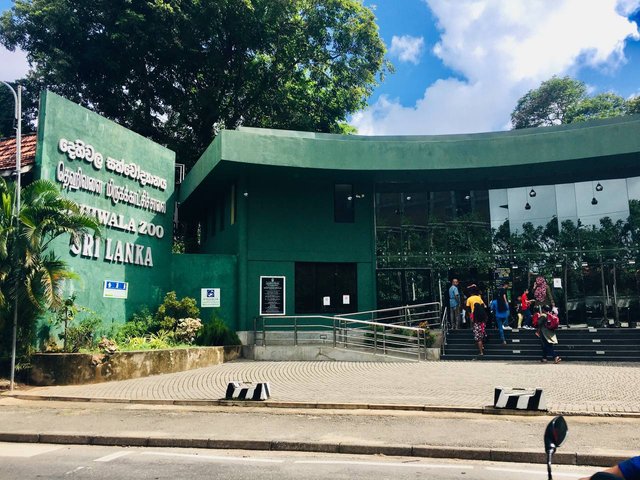A Memorable Visit to Dehiwala Zoo
I always say that Sri Lanka is blessed with many wonderful places, especially with the scenic beauty. Eventhough the National Zoological Gardens of Sri Lanka in Dehiwala is a man-made one, it's one of the famous tourist and local destinations of the country. Amidst in the heart and capital of the country, they have managed a wonderful atmosphere for thousands of exotic and indigenous animals.
Yeah, I know I also have a mixed feeling about this idea, anyway it's a perfect opportunity to explore the animals closely, for educational purposes, to preserve endangered animals, etc. In September 2023, I had the chance to visit this famous zoo with my fiancée, and it was a truly memorable experience

what3words: ///jammy.brushing.estate
As I mentioned earlier, the zoo is located in Dehiwala, Colombo. If you're starting your journey from Pettah, you can take a train and get off at Dehiwala Railway Station. Or else, there are regular buses via Galle Road; you can get off at Dehiwala Junction and then take the 176 bus. You can get off near the zoo. It's a maximum 1-hour journey.

When we reached the place, we got a positive vibe from the first impression. Nice design upfront, and there were plenty of parking spots available nearby. And the most amazing thing about this is it's open every day, even on public holidays from 8.30 am to 6 pm. So, nothing to worry about any inconvenience.
The ticket prices are also fairly low as you can see below.
- Local Adults - LKR.250 (0.85 USD)
- Local Children - LKR.100 (0.35 USD)
- Foreign Adults - LKR.4450 (15 USD)
- Foreign Children - LKR.2225 (7.5 USD)
- School/nursery groups - LKR.50 (0.17 USD)
Please remember that the money should be given in Sri Lankan rupees. We don't have to book prior, as there's always plenty of space to freely enjoy the atmosphere.
Well-maintained and designed Landscape




Dehiwala Zoo is one of the oldest in this part of the world. It was first started by two brothers, John Hagenbeck and Carl Hagenbeck, in the late 1920s when we were under the British Empire. Anyway, later, in 1936, it was taken by the Sri Lankan Government and slowly reconstructed into the current form. As of now, there are 3000+ animals of more than 310 species, src.

The Map of the premises
Just after setting foot at the zoo, I was amazed by the beautiful surroundings. As you can see it's not just having some animals in a zoo in a highly populated area. There has been a whole lot of thinking to make this a good experience for the visitors and animals as much as possible. There are beautiful gardens, ponds, lakes, waterfalls, dense forests, and shady pathways as well. They have tried to provide suitable habitats for different animals.
The zoo covers an area of 10.1 ha, and it has been divided into different sectors for aquatic animals, birds, reptiles, etc. Using this map, we can easily locate and visit them in the order without missing out.
The Aquarium




First, we went to the aquarium, one of my favorites. At the entrance, two California Sea Lions are playing in the pool. They are a very friendly breed, and there's an opportunity to watch the Sea lion performances. At around 4.00 p.m., they are fed by their keepers.
Inside the aquarium, there are various types of fish and other aquatic animals. According to Wikipedia, there are around 1000 fish, of 65 species.
Birds
The next exciting place is the Birds section. There are two walk-through aviaries, an open-air pond, and a Butterfly Garden with 1500+ birds and 100+ butterflies. Small birds are in cages, and rather big ones like ostrichs, macaws, toucans, swans, and peacocks have more freedom.


The butterfly Garden is also very beautiful, with several species in a natural environment.
So, apart from that, there are 250+ reptiles, mainly in the reptile houses highly protected, and crocodiles in protected lagoon-type structures.
Then the majority of space is allocated for different types of mammals, including Sri Lankan and African elephants, lions, jaguars, Bengali tigers, bears, Sumatran orangutans, common chimpanzees, monkey types, zebra, horses, rhinoceros, giraffes, hippopotamus, etc.
I will attach some of my images taken of them below. The fascinating thing is a very good explanation, and description have been placed about every species/animal. So, it's a great chance to learn about new things, especially for the students, and animal enthusiasts.
Brown bear(left) & hippopotamus (right)


Pygmy hippopotamus(left) & Deer (right)


Giraffe(left) & Zebra(right)


Name is not sure (left) & Bengali tiger (right)


Me with an elephant and her with a donkey


So, apart from watching animals, there's an Elephant show, a Museum, and small educational programs as well. So, this is a very good experience.
There are many indigenous and also foreign animals received through exchange programs to have a diversified combination. And recently with the breeding programs they try to protect the endangered species.
Inside the premises, visitors have access to restaurants, an ice cream shop, a souvenir shop, washrooms, etc. So, nothing to worry about the sanitary facilities.
So, I invite you to visit the place, or share your experience with me!
External Links to explore
- https://en.wikipedia.org/wiki/National_Zoological_Gardens_of_Sri_Lanka#
- https://nationalzoo.gov.lk/zoo/
So, that's it for today!! Until the next time! Enjoy!
Thank you.
Best Regards!
Thank you for using Steem Atlas.
For more information about posting on Steem Atlas check out our Curation Guidelines...
Thank you so much for the support! Appreciated!
Supporting the Steem Atlas project.
Thank you from the @pennsif.witness team.